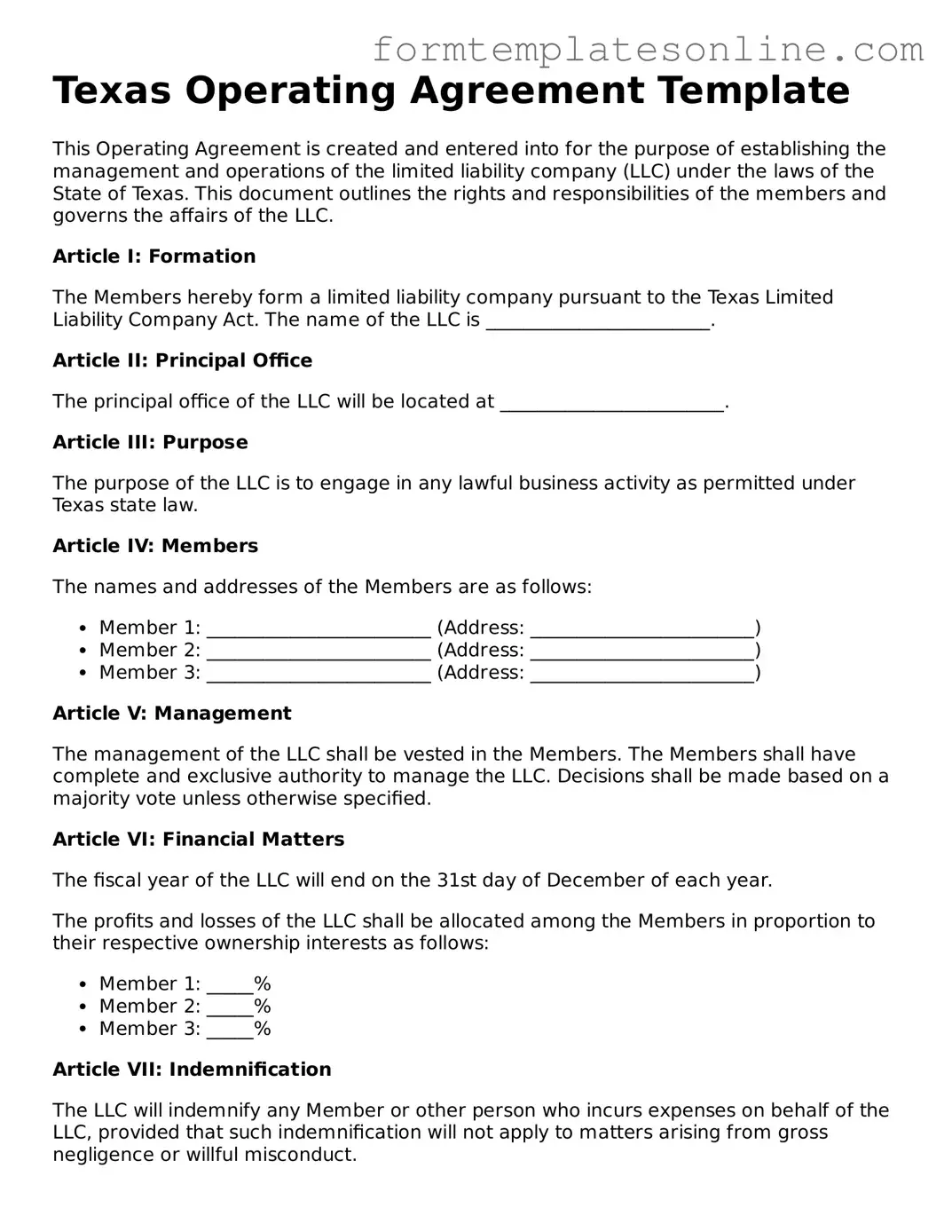What is a Texas Operating Agreement?
A Texas Operating Agreement is a legal document that outlines the management structure and operating procedures of a limited liability company (LLC) in Texas. It serves as a foundational agreement among the members of the LLC, detailing their rights, responsibilities, and the operational guidelines of the business.
Why is an Operating Agreement important for an LLC in Texas?
This agreement is crucial because it helps define the roles of each member and establishes how the LLC will operate. It can prevent misunderstandings and disputes among members by clearly laying out the rules. Additionally, having an Operating Agreement can provide protection against personal liability and ensure that the LLC is recognized as a separate legal entity.
Do I need to file the Operating Agreement with the state?
No, you do not need to file the Operating Agreement with the Texas Secretary of State. However, it is advisable to keep it on file for your records and to provide it to any members or managers of the LLC as needed. Having it readily accessible can help resolve any potential disputes in the future.
Can I create my own Operating Agreement?
Yes, you can create your own Operating Agreement. Many resources are available online to guide you through the process. However, it is often beneficial to consult with a legal professional to ensure that your agreement complies with Texas law and adequately addresses your specific business needs.
What should be included in a Texas Operating Agreement?
Key elements typically include the names of the members, the management structure, voting rights, profit distribution, procedures for adding or removing members, and guidelines for handling disputes. It can also cover financial matters, such as capital contributions and how profits and losses will be allocated among members.
How can an Operating Agreement help in case of disputes?
An Operating Agreement can provide a clear framework for resolving disputes among members. By outlining the procedures for conflict resolution, such as mediation or arbitration, it can help members address disagreements in a structured manner. This can save time and resources compared to litigation.
Is an Operating Agreement required by law in Texas?
While Texas law does not require LLCs to have an Operating Agreement, it is highly recommended. Without one, the LLC will be governed by the default rules set forth in the Texas Limited Liability Company Act, which may not align with the members' intentions or business practices.
Can I amend my Operating Agreement after it has been created?
Yes, you can amend your Operating Agreement. Most agreements will include a section outlining the process for making amendments. Typically, this requires the consent of a certain percentage of the members. Keeping the agreement updated is essential to reflect any changes in the business or membership structure.
What happens if I don’t have an Operating Agreement?
If you do not have an Operating Agreement, your LLC will be subject to Texas’s default laws regarding LLCs. This can lead to unexpected outcomes, such as how profits are distributed or how decisions are made. It may also increase the risk of personal liability for members, as the protections that an Operating Agreement provides may not be in place.
